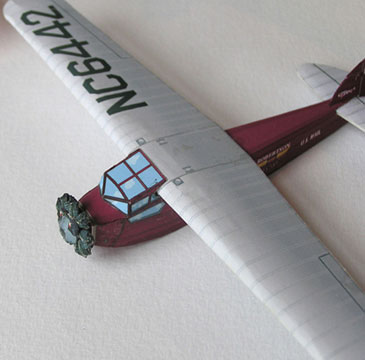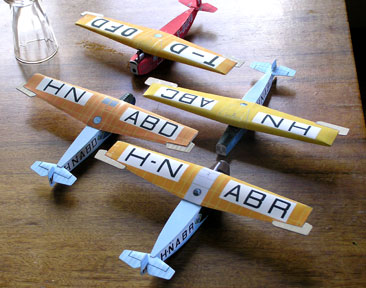| HOME PRINTS POSTCARDS CCSTUDIO TERRY MOYLE ROSIE LOUISE | ||||||||||||||||||
| Models Pg 1 Pg 2 | ||||||||||||||||||
| Models pictured below are available from Contour Creative Studio as 48th scale hard copy kits. These kits include; full written and visual instructions, 1 kit printed on quality paper, a sheet of card (cover not included). Payment by cheque or direct credit, or for international customers PAYPAL or a cheque (requires 21 days to clear). | ||||||||||||||||||
|
||||||||||||||||||
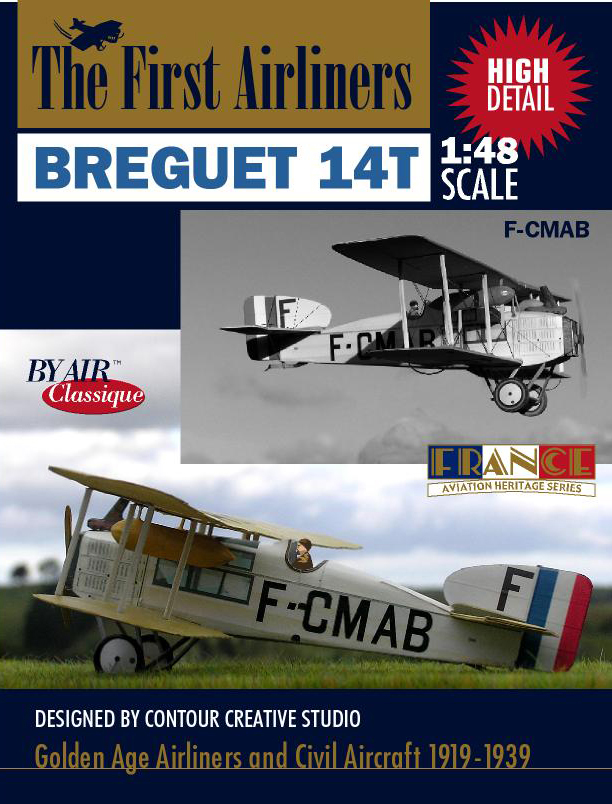 |
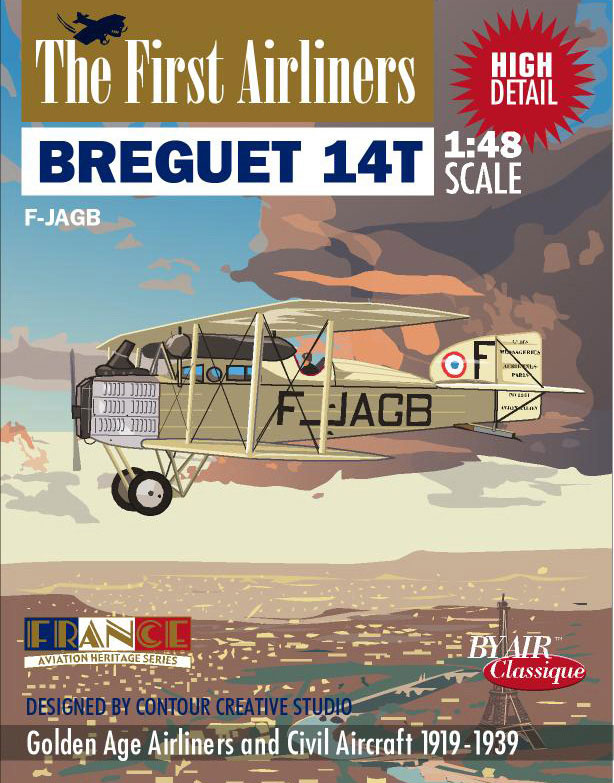 |
|||||||||||||||||
BRE14T001 $20.00 F-CMAB circa 1920 (flew for CMA) |
BRE14T002 $20.00 F-CMAB circa 1919 ( flew for CMA) |
|||||||||||||||||
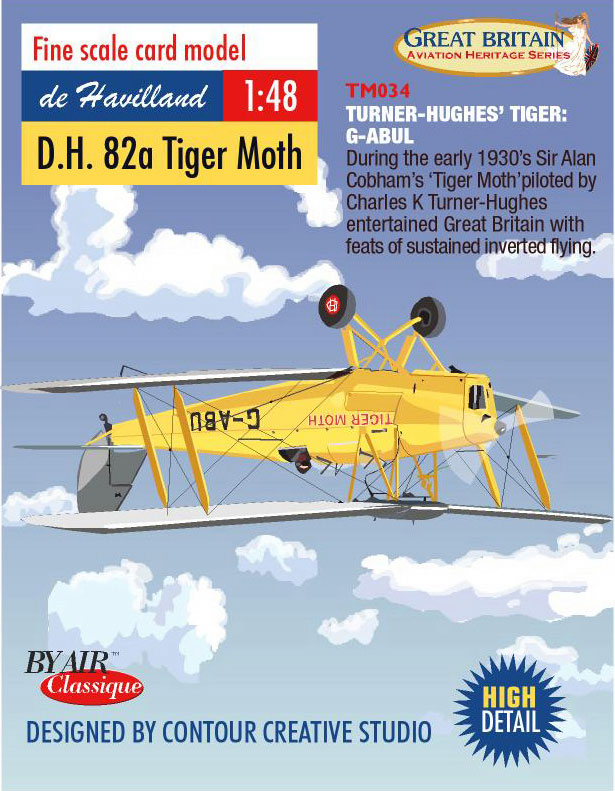 |
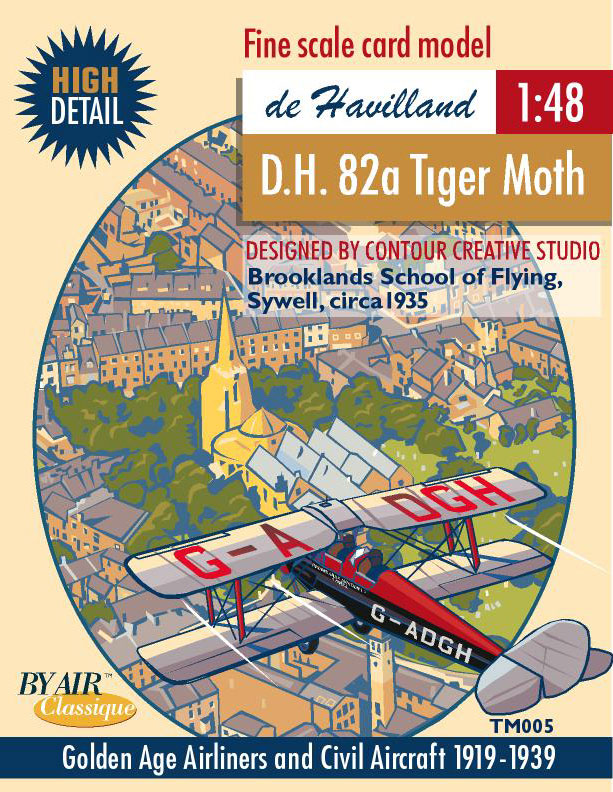 |
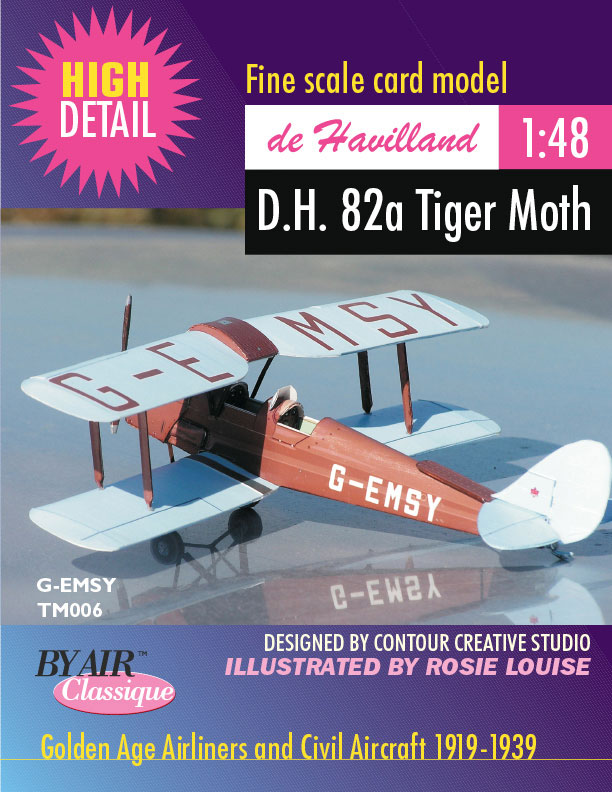 |
||||||||||||||||
TM034 $14.00 (NZ) |
TM005 $14.00 (NZ) G-ADGH (Brooklands Flying Club TM circa 1935) |
TM006 $14.00 (NZ) G-EMSY (contemporary scheme) |
||||||||||||||||
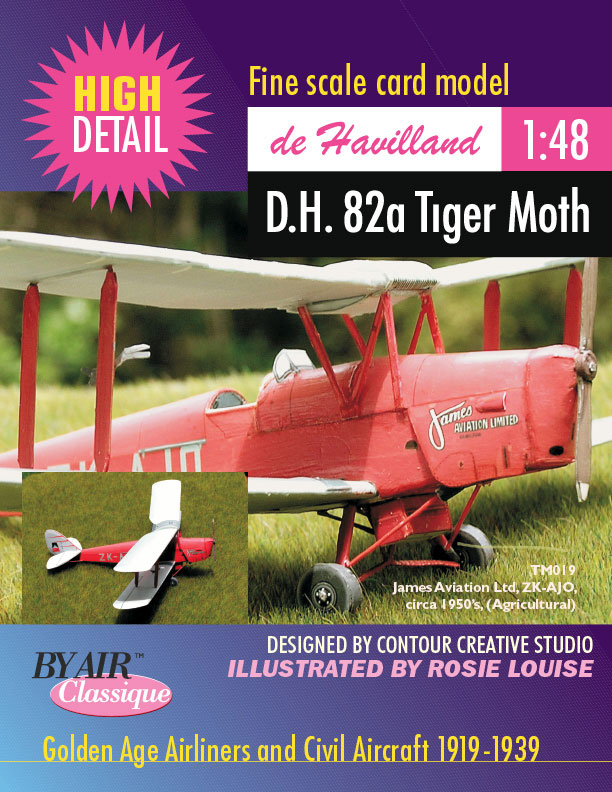 |
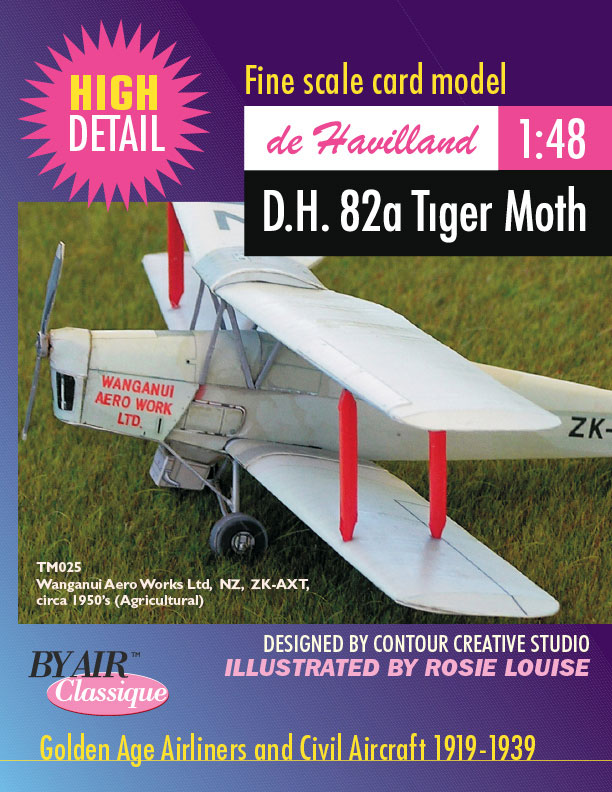 |
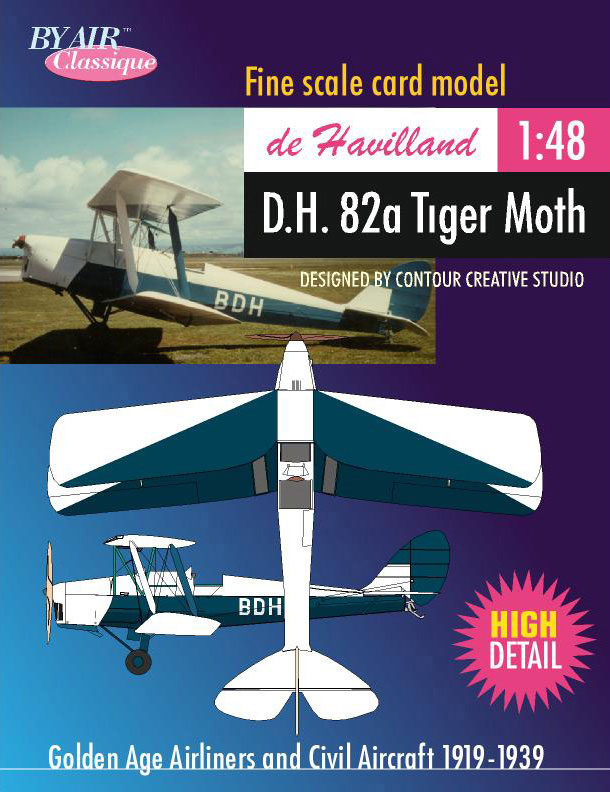 |
||||||||||||||||
TM019 $14.00 (NZ) ZK-AJO Pioneering James Aviation Topdresser circa 1950's (housed now at Te Papa Museum). |
TM025 $14.00 (NZ) ZK-AXT Wanganui Aero Work Ltd Topdresser, circa 1950's. |
TM045 $14.00 (NZ) ZK-BDH Topdresser with 1980's scheme. |
||||||||||||||||
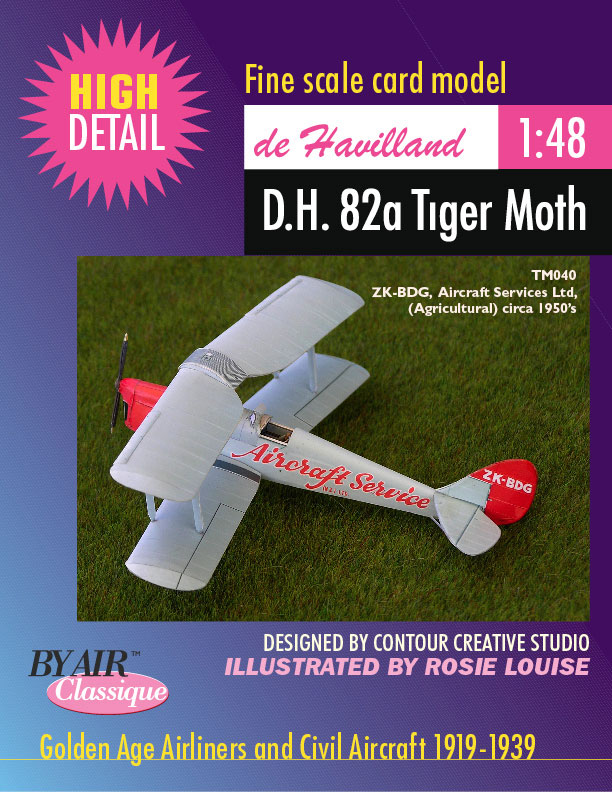 |
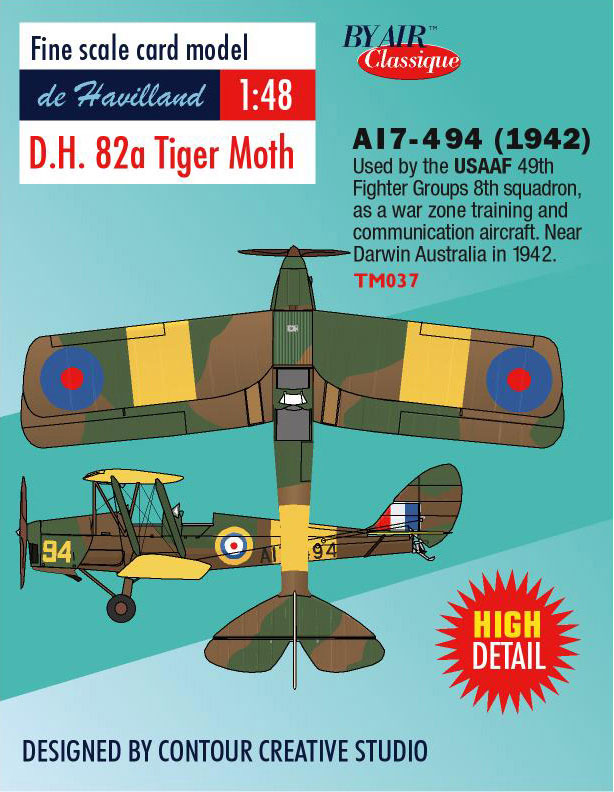 |
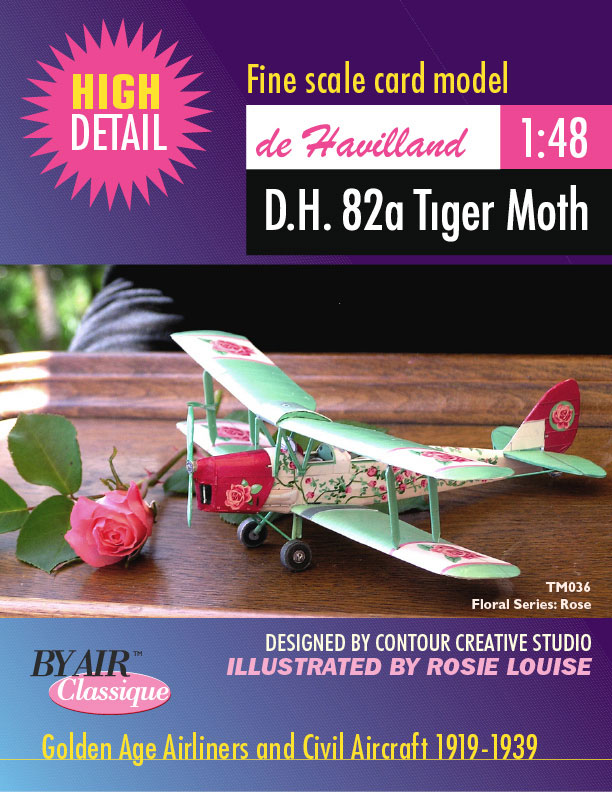 |
||||||||||||||||
TM037 $14.00 (NZ) AI7-494. Used in WW11 by USAAF in Australia as a communications aircraft. |
TM036 $14.00 (NZ) ROSE 1 Custom floral scheme. |
|||||||||||||||||
TM040 $14.00 (NZ) ZK-BDG Aircraft Services Ltd Topdresser, circa 1950's. |
||||||||||||||||||
| AVAILABLE SOON! Designed by Terry Moyle and Rosie Louise, these are the 1/72 prototypes of classic golden age aircraft that will be part of the BY AIR Classique paper model range (produced now in 1/48 scale). |
||||||||||||||||||
| Ford 2AT. This all-metal monoplane was designed by William Stout and was developed by Henry Ford. It is depicted in front of the Dearborn Passenger Air Terminal, the first modern air terminal built in the United States. Both the Ford 2AT and the building will be available as 1/72 scale paper model kits. | 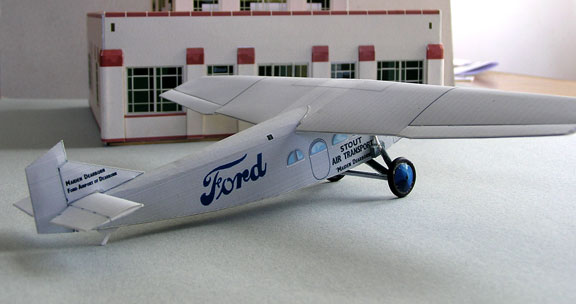 |
|||||||||||||||||
| Rohrbach Roland III. This distinctive 1920's trimotor was of all-metal construction and operated with German and Iberian airlines. | 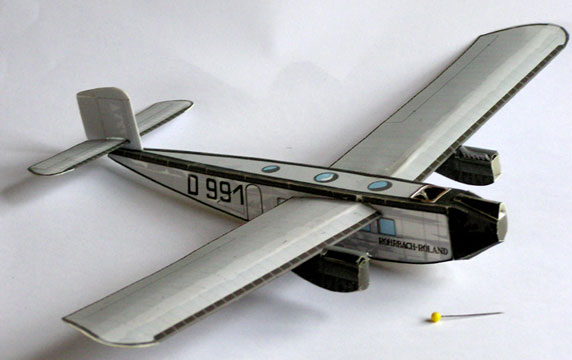 |
|||||||||||||||||
| Albatros L58. A monoplane that operated in the early 1920's it's distinctive windows and shape represented the thinking in early airliner technology, with an open cockpit and large wooden wing.The Albatros L.58 was built in very small numbers and operated exclusively with German airlines of that era.This model will be available as a 1/48 scale model kit | 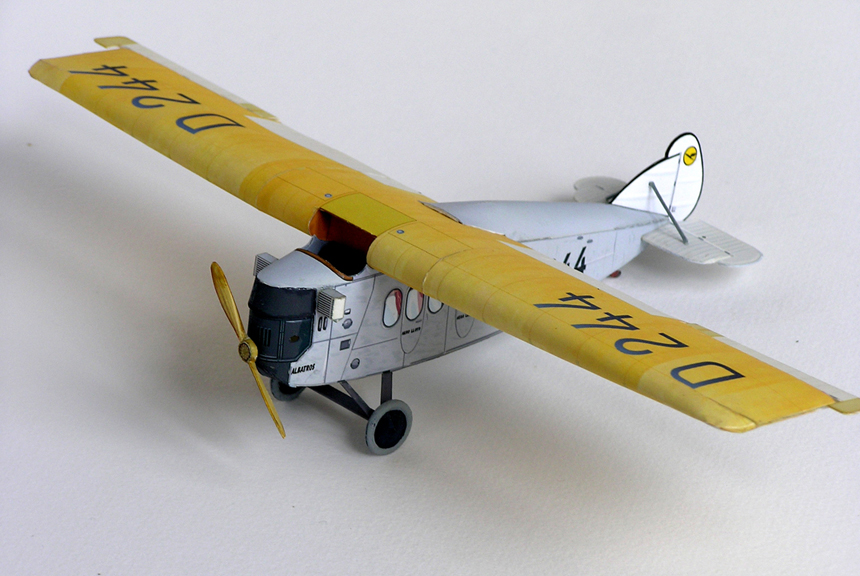 |
|||||||||||||||||
| Cessna AW The Cessna AW, depicted here in the livery of Robertson Airlines, was the first commercially successful aircraft produced by Clyde Cessna, in Wichita, the United States 'Air Capital'. It was the forerunner of the tens of thousands of subsequent light aircraft associated with the famous Cessna name. | ||||||||||||||||||
| Travel Air 5000. Another monoplane associated with Wichita, was the Travel Air 5000. The same model of aircraft, with slight modifications, successfully won the infamous Dole air race to Hawaii. The model depicted is finished in the livery of National Air Transport, an American airline of the late 1920s. | 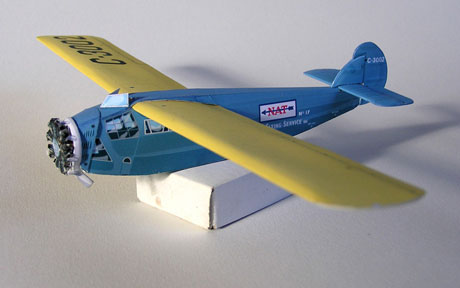 |
|||||||||||||||||
| Fokker II & III. The Fokker name was associated with many of the pioneering tri-motors of the 1920s and 1930s. The Fokker II has the distinction of being one of the first commercial airliners of its day and with the larger Fokker III operated with many airlines in Europe.The models depicted are all different and feature some of the engine variations installed in these aircraft. | 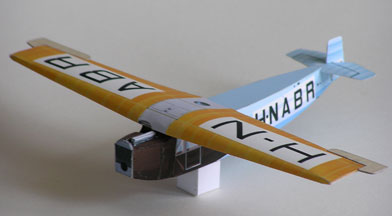 |
|||||||||||||||||
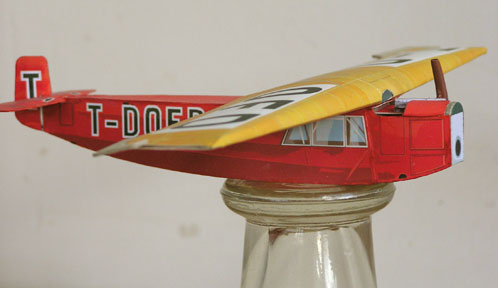 |
||||||||||||||||||
| Junkers A20. This very fine looking Junkers mailplane flew in the 1923 as a mailplane/all purpose plane, that was also equipped with floats. It saw service in over a dozen countries during the 1920's. The Junkers A 20 is the first of a number of Junkers civil aircraft we have designed for the collection, including the famous Junkers F 13, and the not so well known but more elegant F 24. | 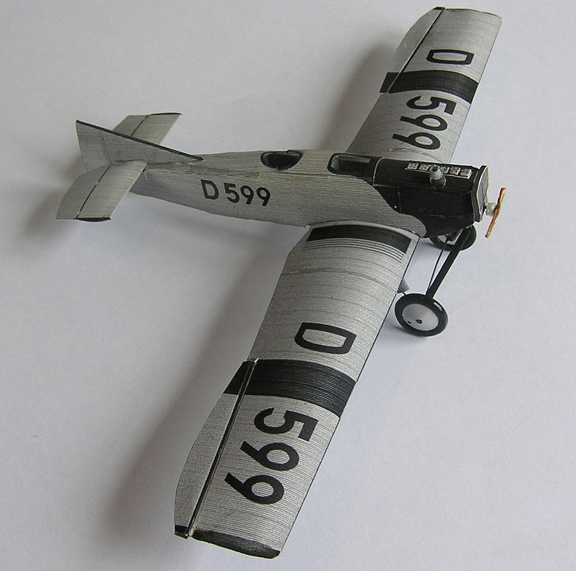 |
|||||||||||||||||
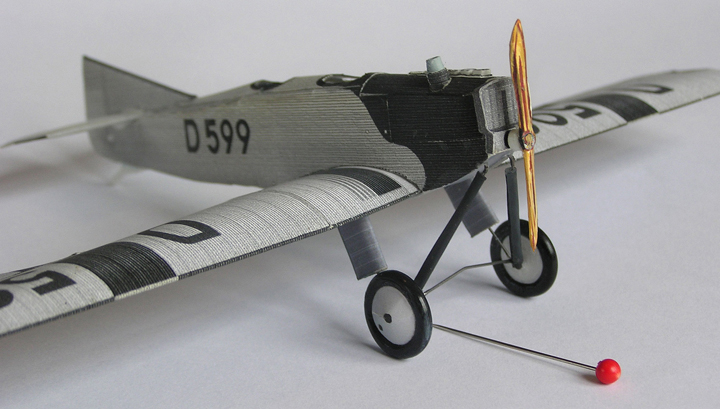 |
||||||||||||||||||
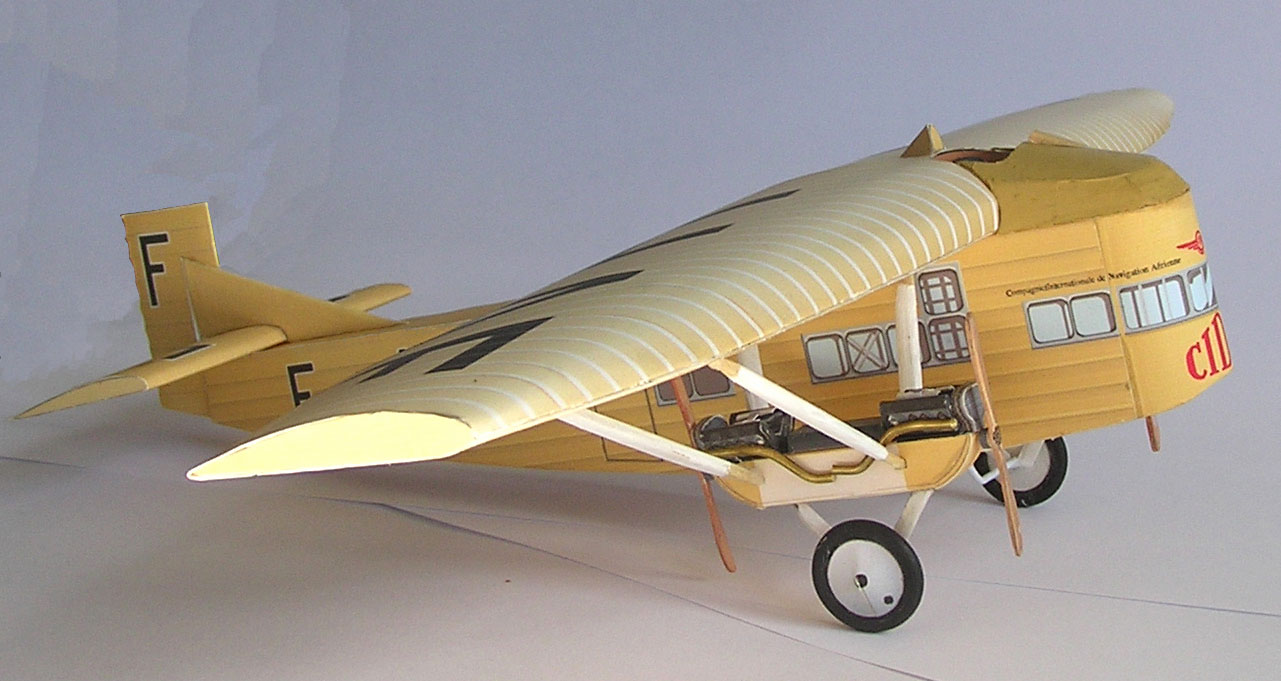 |
||||||||||||||||||
| The French Farman Jabiru F121 is one of the classic airliners of the mid-twenties.Long sought after as a modelling subject, for the first time we are delighted to introduce this fantastic-looking aircraft into our collection.With 'O' ring wheels, brass exhausts and struts modelled from ice cream sticks, the four-engined Jabiru will make up into an impressive well-engineered model sure to attract comments. | ||||||||||||||||||
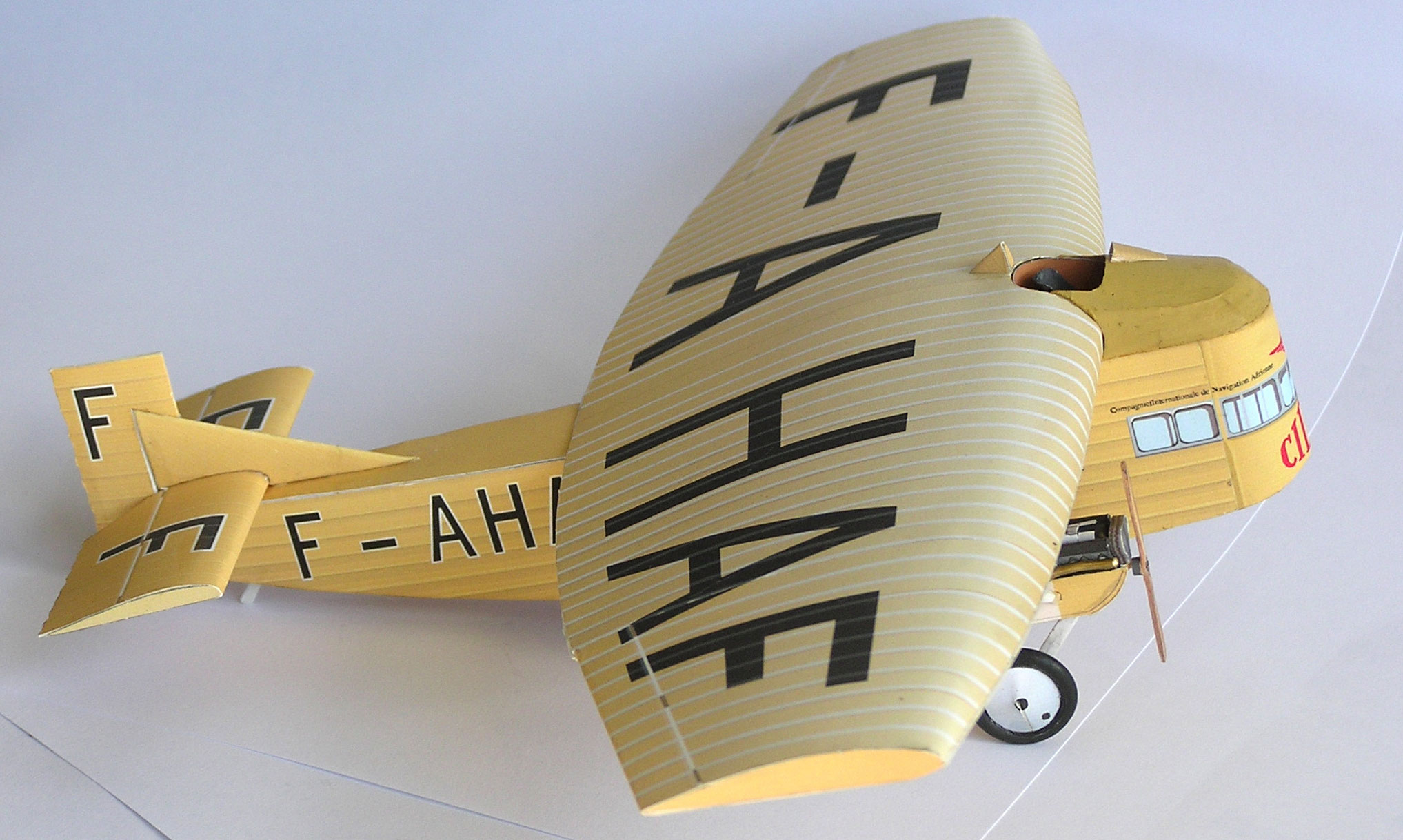 |
||||||||||||||||||
| The Breguet 14, was a French bomber and reconnaissance aircraft.At the conclusion of WW I numerous aircraft were converted to civilian purposes. The Breguet 14T (F-JAGB) operated with Compagnie des Messageries Aeriennes (CMA), in 1920. The Breguet 14T 'salon' had a small 2 passenger cabin to the front of the cockpit and first flew in 1919, and is numbered among the first passenger aircraft in the world. | ||||||||||||||||||
| The Frederick Koolhoven designed Desoutter I (ZK-ACJ) modelled here is one of New Zealand's best known aircraft from the 1930's. Owned for many years by Mr. Stan Blackmore in the Waikato, it originally flew to Australia from Great Britain. In 1941 in was claimed that the aircraft had carried more passengers than any other of a similar capacity operating in the '30's. It introduced many New Zealanders to flying and also flew missions of mercy throughout the country.The Desoutter is depicted as operated with the addition of Tiger Moth wheels. | ||||||||||||||||||
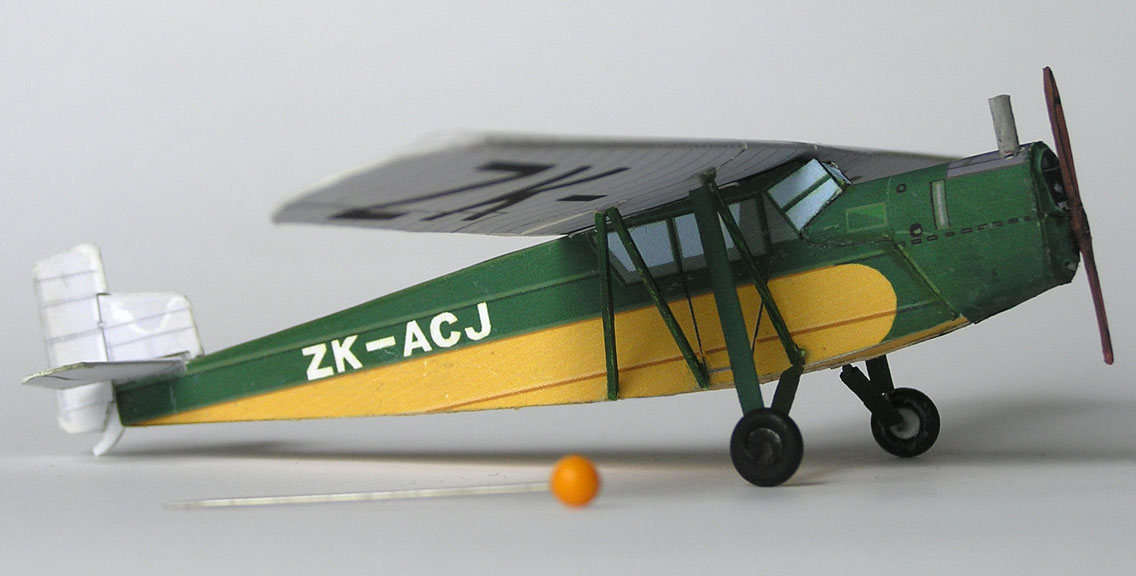 |
||||||||||||||||||
| The Miles M.3 Falcon (G-AEEG) has a distinctive elegant profile that speaks much of 30's art deco styling. First flown in 1935, the Falcon accommodated two passengers side by side behind the pilot. The British manufactured aircraft was exported to Europe, South Africa and New Zealand. The aircraft depicted is still in existence, forming part of the Shuttleworth Collection. | 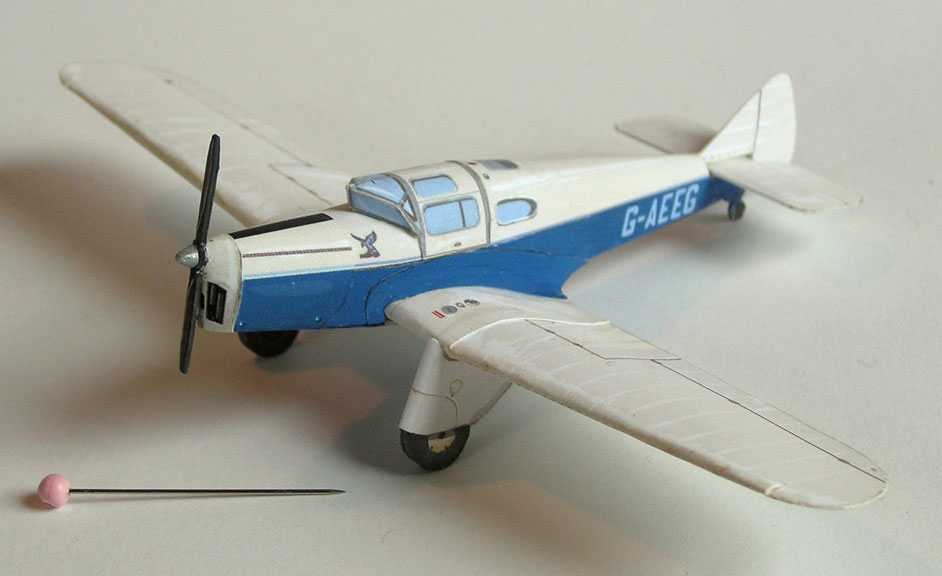 |
|||||||||||||||||
The Dornier Komet (RR 17)was an all-metal airliner, accomodating 4 passengers. The aircraft was first flown in 1920 at the dawn of airline travel. Largely flown by airlines in Germany where it was built, it was also operated in Spain, Switzerland and Russia. The Dornier Komet II, which is designed here (RR17) was operated in the Russia in the early 1920 through to 1929 when it was destroyed in a crash.
The DH 9C (OBELG) was flown by the early Belgian airline SNETA in 1920 and was a passenger conversion of the military DH 9. The De Havilland DH 9 was a pioneering passenger aircraft in many countries in the post World War I era, being significant in particular, in the development of aviation in Australia, India and New Zealand. The aircraft was the basis for many cabin variants, including this conversion for SNETA. The De Havilland 82A Tiger Moth (ZK-AWJ) is one of the most popular and well known biplane aircraft in the world. The aircraft modelled here served as a super phosphate topdresser in the Hawkes Bay, New Zealand in the 1950's. The DH 82A was New Zealand's most common aircraft type, being used largely by aero clubs and agricultural companies in the post WWII era. We will be releasing a number of different livery versions of the Tiger Moth when this design becomes available. Designed by Dutch designer Frederick Koolhoven, the1919 FK 26, is regarded as the first airliner specifically designed as an airliner. Most of the first airliners were derived from military aircraft. The FK 26 served with early British airline Instone Air, in which livery GE-APK, this aircraft is modelled. The FK 26 is believed not to be represented in model kit form previously. We will be releasing the less colourful livery of this aircraft also. Other Koolhoven designs intended for release include the trimotor FK 33 and the Desoutter monoplane (see above). For more information and other workshop pics of other By Air Classique Models, click Here Models Pg 1 Pg 2 |
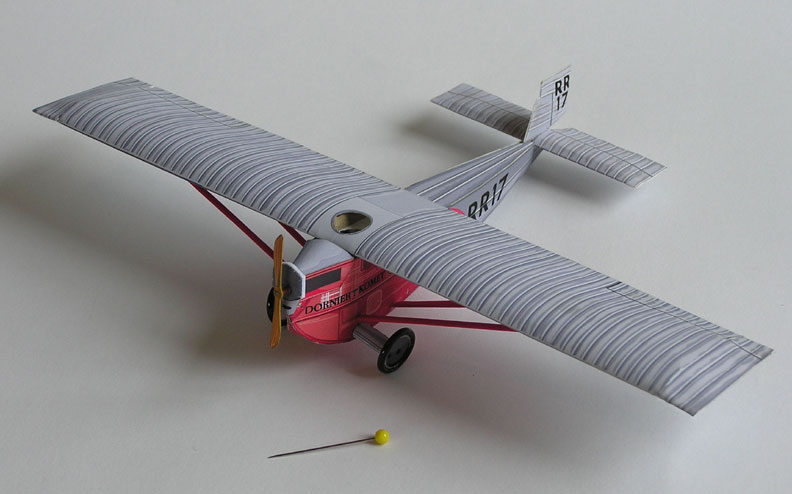 |
|||||||||||||||||
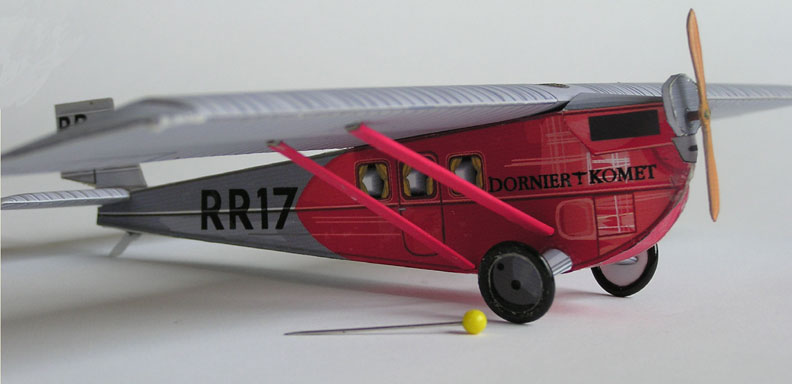 |
||||||||||||||||||
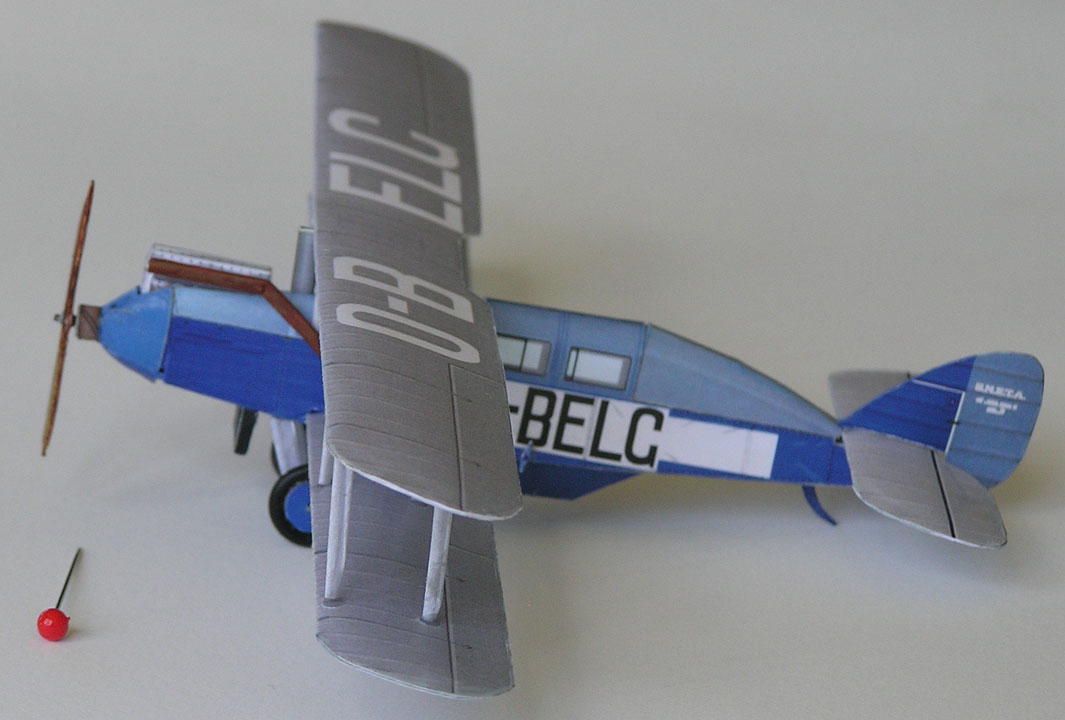 |
||||||||||||||||||
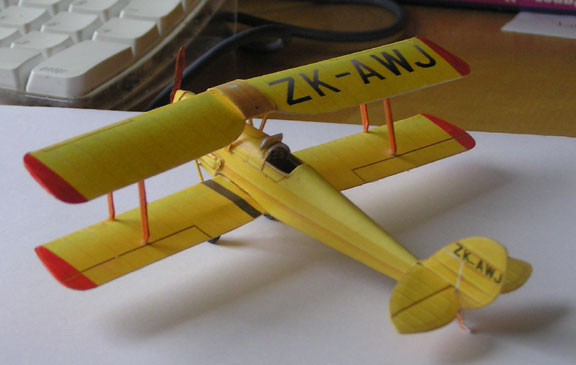 |
||||||||||||||||||
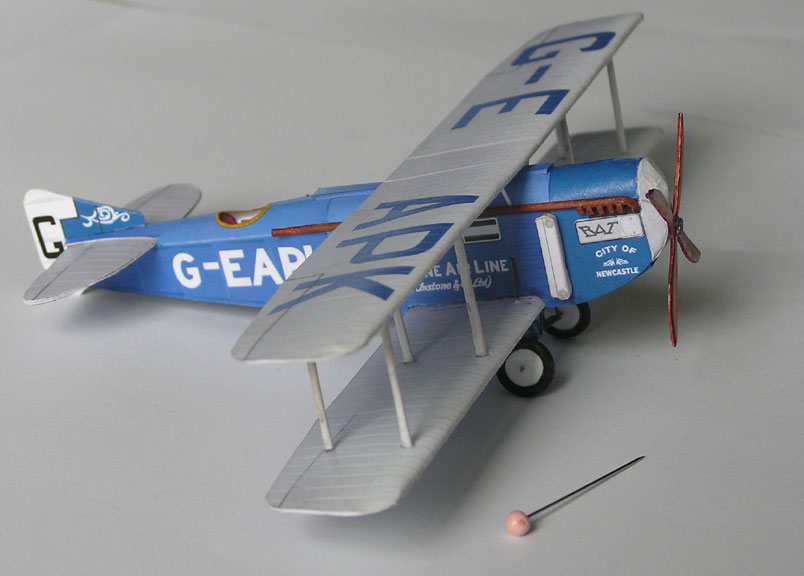 |
||||||||||||||||||

